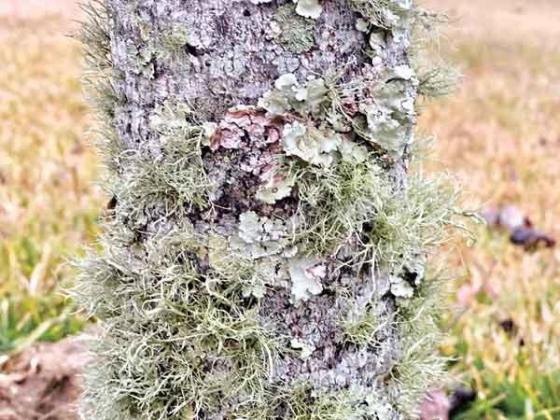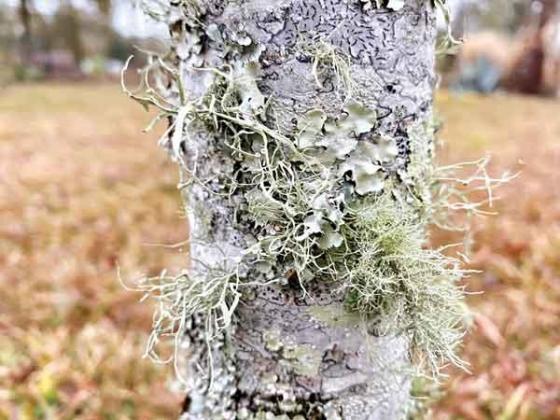

Heather Kirk-Ballard LSU AgCenter horticulturist
Now that the majority of our deciduous plants have dropped their leaves, you may have noticed the gray coloring on the trunks of some trees and shrubs in your landscape. When trunks and branches become bare, these gray areas become evident and may worry even the most avid gardeners.
No need for concern. Most likely, these are lichens — likable, harmless organisms.
You might ask yourself: What is a lichen? They are very interesting (and beautiful, in my humble opinion) organisms found in every ecosystem on Earth. Lichens grow in deserts, urban landscapes, tropical rainforests and even tundras.
According to the U.S. Forest Service, there are approximately 3,600 species in North America alone, and those are just the ones that have been classified here. Worldwide, there are approximately 17,000 species.
Lichens are a unique combination of two separate organisms — fungi and algae, or sometimes cyanobacteria — that live in a symbiotic relationship on trees, rocks and other surfaces. A symbiotic relationship is a close relationship between two species in which at least one benefits.
The fungi portion of the lichen cannot produce its own food and relies on the blue-green algae or cyanobacteria it forms a relationship with to obtain food in exchange for protection. The algae and cyanobacteria supply food via photosynthesis, while the fungi gather water and other needed nutrients from the air and surrounding surfaces.
There are three forms of lichens, and they are all classified by the way they look. First, the foliose lichens can be flat, produce wavy folds like leaves of lettuce or can be full of ridges. Second, there are the highly branched fruticose lichens that appear hair-like and stand upright, sometimes displaying a cup. Lastly, there are the crustose lichens, and as the name indicates, they form a thin crust on the surfaces they adhere to.
How do you prevent or stop the growth of lichens? My answer is do not worry about it. If you are concerned, however, my advice is to keep your plants healthy. I am no sports guru, but I love the saying “the best offense is a good defense.” Be aggressive with your plants’ health to provide the best defense against all stressors.
Lichens can actually be an ally in helping you identify these stressors, as they’re rarely found on healthy, vigorous trees. But remember that lichens do not cause the problem; they just benefit from unfortunate situations.
Because lichens photosynthesize, they prefer sunlight and moisture provided by trees that have suddenly lost leaves or branches. More light can reach the trunk surface where lichens have set up camp, encouraging them to grow.
You can lightly prune damaged branches to stimulate new branch growth. This helps establish a fuller canopy.
Try to identify and address stressors such as drought stress, poor water drainage, plant competition, root stress, soil compaction, poor nutrition and improper soil pH. Insects and diseases as well as injury from trimmers, poor planting techniques and chemical injury from herbicides also can cause plants to decline.
If you remove what’s stressing your trees and shrubs, the lichens will go away, and the plant’s overall health will improve. A fungicide containing copper can also be applied to aid in control.
